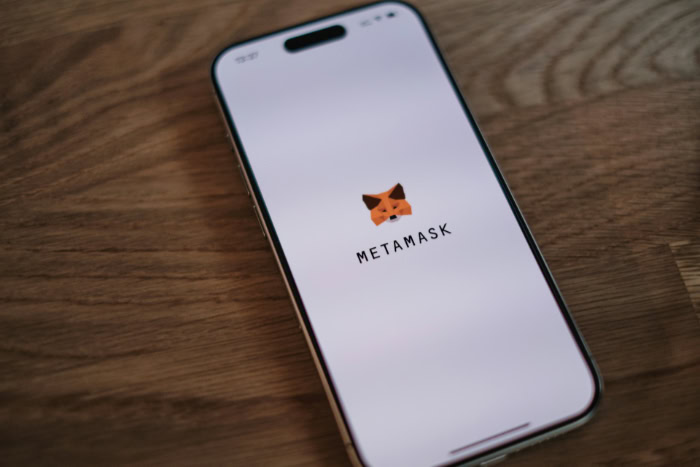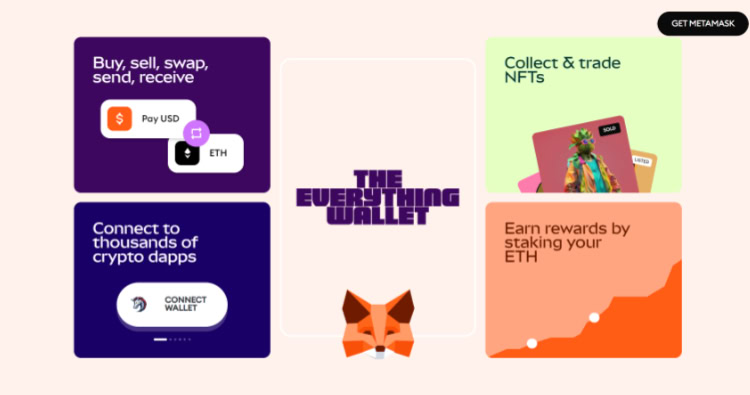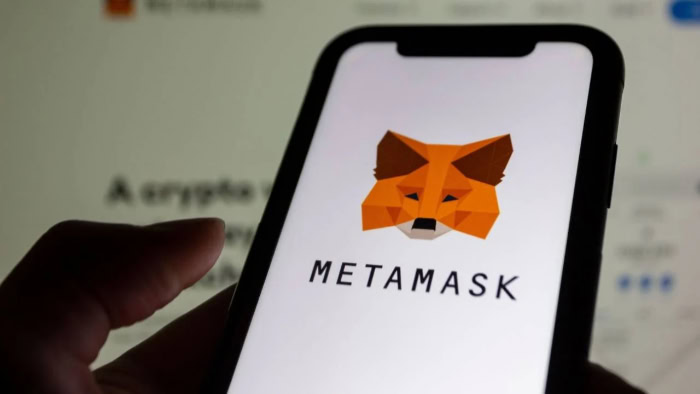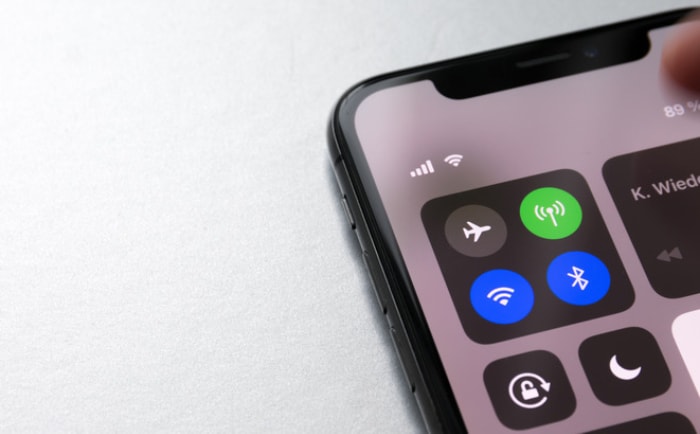What Is MetaMask? And Is It Safe?

Decentralized finance and NFTs are not accessed through a typical website login; they require a specific kind of digital passport. For many, MetaMask is that passport.
It is a crypto wallet that functions as a browser extension and mobile app, connecting you directly to the blockchain. This grants you complete control over your digital assets, with no intermediary company holding your funds.
This freedom, however, means you are solely responsible for security. One wrong click or a misplaced recovery phrase can result in a permanent loss.
What Is MetaMask?
MetaMask is a popular cryptocurrency wallet that acts as a bridge to the decentralized web. Available as both a browser extension and a mobile application, it provides the tools needed to store, manage, and interact with digital assets on Ethereum and other compatible blockchains.
Unlike a traditional bank account, MetaMask gives you direct ownership and control over your funds without relying on a third-party financial institution.
A Self-Custodial Wallet
The most significant aspect of MetaMask is that it is a self-custodial wallet. This means you, and only you, hold the private keys that control access to your cryptocurrency.
The keys are stored in an encrypted format directly on your computer or mobile device. This approach grants you full sovereignty over your assets, as no central entity can freeze or seize your funds.
It also places the full responsibility for securing those assets on you. If your device is compromised or you lose your credentials, there is no customer service department to help you recover access.
A Gateway to Decentralized Apps
MetaMask functions as a secure login for the growing ecosystem of decentralized applications, or dApps. Instead of creating a new username and password for every website, you connect your wallet to interact with a wide range of services.
These include decentralized finance (DeFi) platforms for lending and borrowing, NFT marketplaces for buying and selling digital collectibles, and blockchain-based games. The wallet simplifies these interactions by handling the technical communication with the blockchain, allowing you to approve or reject transactions with a simple click.
An All-in-One Tool for EVM Chains
While it originated as an Ethereum wallet, MetaMask has expanded to support any blockchain compatible with the Ethereum Virtual Machine (EVM). This includes popular networks like Polygon, Avalanche, and BNB Chain, among many others.
The wallet makes it simple to add and switch between these different networks. It also includes built-in features to enhance the user experience, such as MetaMask Swaps.
This function allows you to trade one cryptocurrency for another directly inside the wallet, saving you the step of sending your assets to an external exchange.
How MetaMask Works

MetaMask operates as an interface between you and the blockchain, simplifying complex processes into a series of understandable steps. It manages your cryptographic keys, communicates with decentralized applications, and submits transactions to the network on your behalf.
Every action, from sending tokens to interacting with a DeFi protocol, follows a secure workflow within the wallet.
Managing Your Keys
When you first set up MetaMask, it generates a unique 12-word Secret Recovery Phrase. This phrase is the master key to your entire wallet.
It is used to generate the private keys for every account you create within MetaMask. Your private keys are stored in an encrypted file on your device, and they are what you use to authorize, or sign, transactions.
The Secret Recovery Phrase serves as the ultimate backup; if you lose access to your device, you can use this phrase to restore your wallet and all its accounts on a new one. It is critical to store this phrase offline and never share it with anyone, as anyone who has it can control your funds.
Connecting to dApps and Signing Transactions
To use a decentralized application, you first connect your MetaMask wallet. The dApp will send a connection request to your wallet, which you must approve.
Once connected, the dApp can view your public wallet address and the assets it holds, but it cannot perform any actions without your explicit permission. When you want to execute a transaction, like swapping tokens or minting an NFT, the dApp will prompt MetaMask to open a confirmation window.
This window displays the details of the transaction, including the estimated network fee (gas fee) and what permissions you are granting. You must manually review and approve the request to sign the transaction with your private key before it is sent to the blockchain.
Communicating with the Blockchain
MetaMask does not run a full copy of the blockchain itself. Instead, it communicates with blockchain networks using something called a Remote Procedure Call, or RPC, endpoint.
An RPC endpoint is a server address that allows the wallet to request information from the blockchain, such as your account balance, and to broadcast signed transactions for processing. By default, MetaMask is configured to connect to the Ethereum network, but you can easily add custom RPC endpoints to connect to a multitude of other EVM-compatible chains.
This functionality allows MetaMask to serve as a single interface for managing assets across many different blockchain ecosystems.
Assessing MetaMask's Security
While MetaMask gives you control over your assets, its safety depends heavily on how you use it. Its design involves a trade-off between convenience and security.
The wallet includes several protective features, but your own practices are the most important factor in keeping your funds secure.
The Hot Wallet Trade-Off
MetaMask is considered a hot wallet, which means it is connected to the internet. This connection is necessary for it to interact with blockchains and dApps in real time, making it very convenient for frequent transactions and daily use.
However, this online status also exposes it to a category of risks that offline wallets do not face. Since the wallet exists on a device that browses the web, it is potentially vulnerable to malware, phishing scams, and malicious websites designed to steal your credentials or trick you into signing fraudulent transactions.
If the computer or phone where MetaMask is installed becomes compromised, your assets could be at risk.
Built-in Protective Measures
To counter these threats, MetaMask incorporates several security layers. First, your private keys are stored locally on your device and are encrypted with your password.
The keys are never transmitted to MetaMask's servers or any external party. Second, no transaction can occur without your explicit approval. Every time a dApp requests an action, a pop-up window requires you to review the details and manually confirm it.
This “explicit permissioning” model acts as a critical firewall, preventing unauthorized activity. Additionally, the developers at ConsenSys regularly issue security updates and provide guidance to help users recognize and avoid common attacks.
Enhancing Security with a Hardware Wallet
For users holding significant amounts of cryptocurrency or valuable NFTs, the most recommended security practice is to pair MetaMask with a hardware wallet. A hardware wallet is a physical device that stores your private keys completely offline, a method known as cold storage.
You can connect devices from manufacturers like Ledger or Trezor to your MetaMask interface. When set up this way, MetaMask still serves as the user-friendly portal to dApps, but all transactions must be physically confirmed on the hardware device itself.
This setup combines the convenience of MetaMask's interface with the superior security of cold storage, ensuring that even if your computer were compromised, your private keys would remain safe.
Mitigating Common Security Risks

Using MetaMask safely requires an awareness of the common threats targeting cryptocurrency users. Scammers constantly devise new methods to trick people into revealing their credentials or approving malicious transactions.
By learning to recognize these dangers and adopting disciplined security habits, you can significantly reduce your risk of falling victim to theft.
Avoiding Phishing Scams and Fake Apps
One of the most prevalent threats is phishing. Scammers create fraudulent websites, emails, or social media posts that mimic official MetaMask communications or popular dApps.
Their goal is to trick you into entering your Secret Recovery Phrase or password on a fake site, which they then use to drain your wallet. To protect yourself, always download the MetaMask extension directly from the official website, metamask.io, or the official app stores for your mobile device.
Bookmark the websites of dApps you use frequently and be suspicious of unsolicited links or pop-ups asking you to connect your wallet or “validate” your account.
Scrutinizing Transaction Approvals
A more subtle attack involves tricking you into signing a malicious transaction or granting excessive permissions to a smart contract. When you interact with a dApp, you might be asked to approve a transaction that allows the contract to spend your tokens.
Some malicious contracts request an unlimited spending allowance, which gives them the ability to drain all of that specific token from your wallet at any time in the future. Always read the details in the MetaMask confirmation pop-up carefully before approving any request.
Be particularly wary of signature requests that appear generic or unrelated to the action you are trying to perform, and be cautious about granting unlimited permissions to new or unfamiliar applications.
Protecting Your Secret Recovery Phrase
Your Secret Recovery Phrase is the single most important piece of information to protect. You should never share it with anyone, under any circumstances.
MetaMask support staff or dApp administrators will never ask for it. Write it down on paper and store it in a secure, private, offline location, such as a safe.
Avoid storing it digitally on your computer, in a password manager, or in cloud storage, as these locations are vulnerable to hacking. Maintaining good device hygiene is also crucial.
Keep your computer’s operating system, browser, and antivirus software up to date to protect against malware that could compromise your wallet or log your keystrokes.
When MetaMask Fits vs. Alternatives
MetaMask is an extremely versatile tool, but it is not the only option for managing digital assets, nor is it the perfect solution for every scenario. Deciding whether it is the right wallet for you depends on your specific goals, the value of the assets you hold, and your personal comfort level with managing your own security.
Ideal for Frequent dApp Interaction
MetaMask truly shines for users who are actively engaged with the decentralized web. Its design as a browser extension and mobile app makes it exceptionally convenient for daily on-chain activities.
If you frequently interact with DeFi protocols, buy and sell NFTs, or participate in blockchain gaming, MetaMask provides a seamless connection. Its broad support for all EVM-compatible networks means you can use a single wallet to manage assets across many different blockchains.
Features like the built-in swap function further simplify the process of trading tokens, making it a powerful all-in-one tool for the active user.
Securing Large or Long-Term Holdings
For storing large amounts of cryptocurrency or high-value assets that you do not plan to trade often, relying solely on MetaMask as a hot wallet may not be the most secure strategy. The online nature of the wallet makes it a potential target for sophisticated attacks.
In these cases, it is preferable to pair MetaMask with a hardware wallet. By doing this, your private keys remain stored offline on the physical device, which must be used to approve every transaction.
You still benefit from MetaMask’s easy-to-use interface for browsing dApps, but you gain the much stronger security of cold storage, minimizing your exposure to online threats.
Weighing Self-Custody Against Alternatives
The choice to use MetaMask is fundamentally a choice for self-custody. It grants you complete and uncensored control over your funds. However, this freedom comes with absolute responsibility.
If you lose your Secret Recovery Phrase, your assets are gone forever. For users who find this responsibility uncomfortable, custodial services offer an alternative.
Custodial wallets, often found on centralized exchanges, manage your private keys for you. This provides conveniences like password resets and customer support, but it requires you to trust a third party with your assets.
You must weigh the trade-offs between the sovereignty of self-custody and the convenience offered by a custodial provider.
Conclusion
MetaMask provides a powerful and accessible entry point into the world of decentralized applications and finance. As a self-custody wallet, it gives you complete control over your digital assets, acting as your personal gateway to interact with the broader EVM ecosystem.
This autonomy, however, places the burden of security squarely on your shoulders. Your safety ultimately relies on your own diligence.
Protecting your funds requires disciplined practices, such as safeguarding your Secret Recovery Phrase, verifying the authenticity of websites and applications, and carefully reviewing every transaction before approval. For those holding significant balances or seeking the highest level of security, integrating a hardware wallet is the most effective way to protect your private keys from online threats while still enjoying the convenience of the MetaMask interface.


